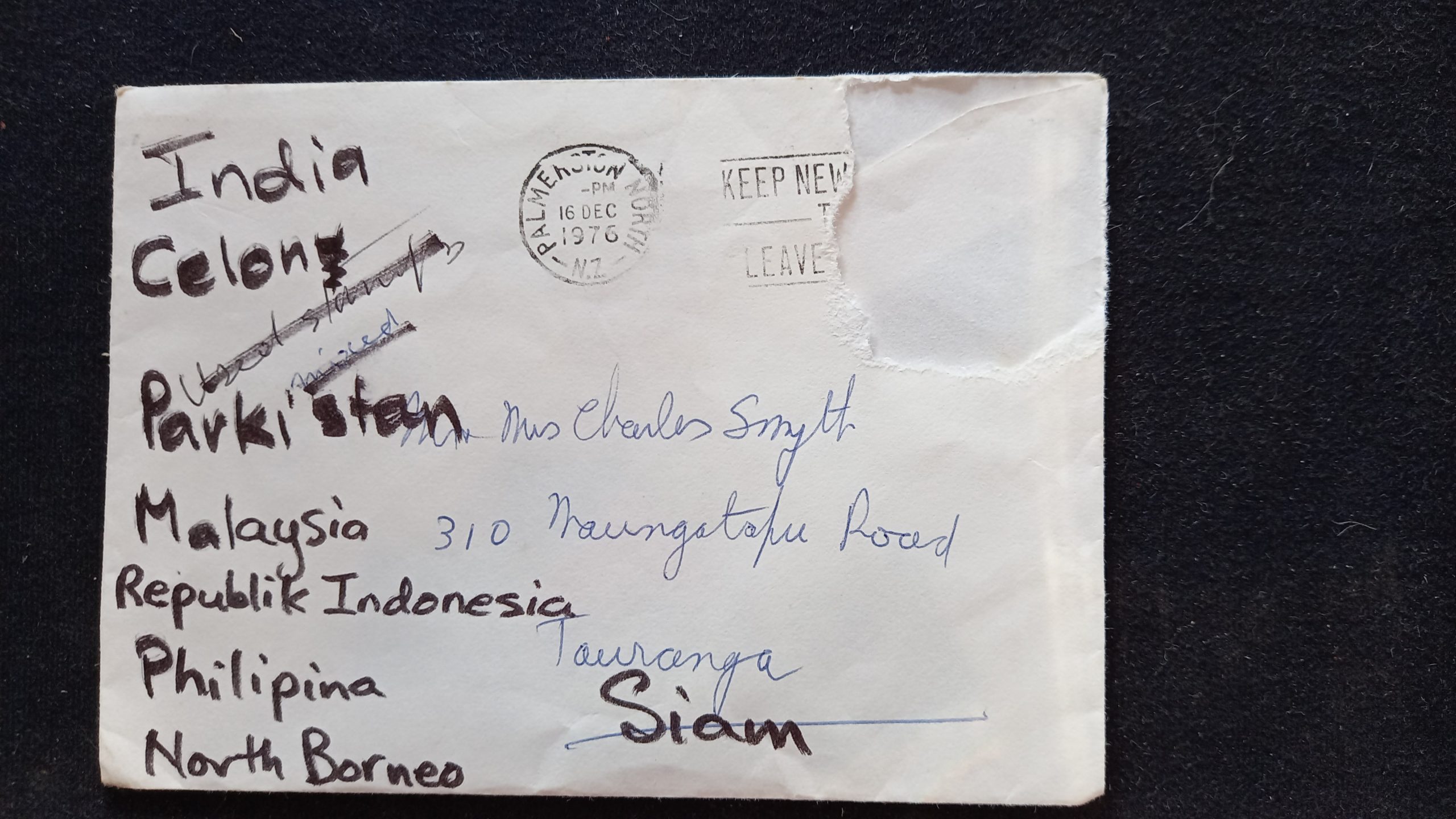
Envelope with some stamps inside
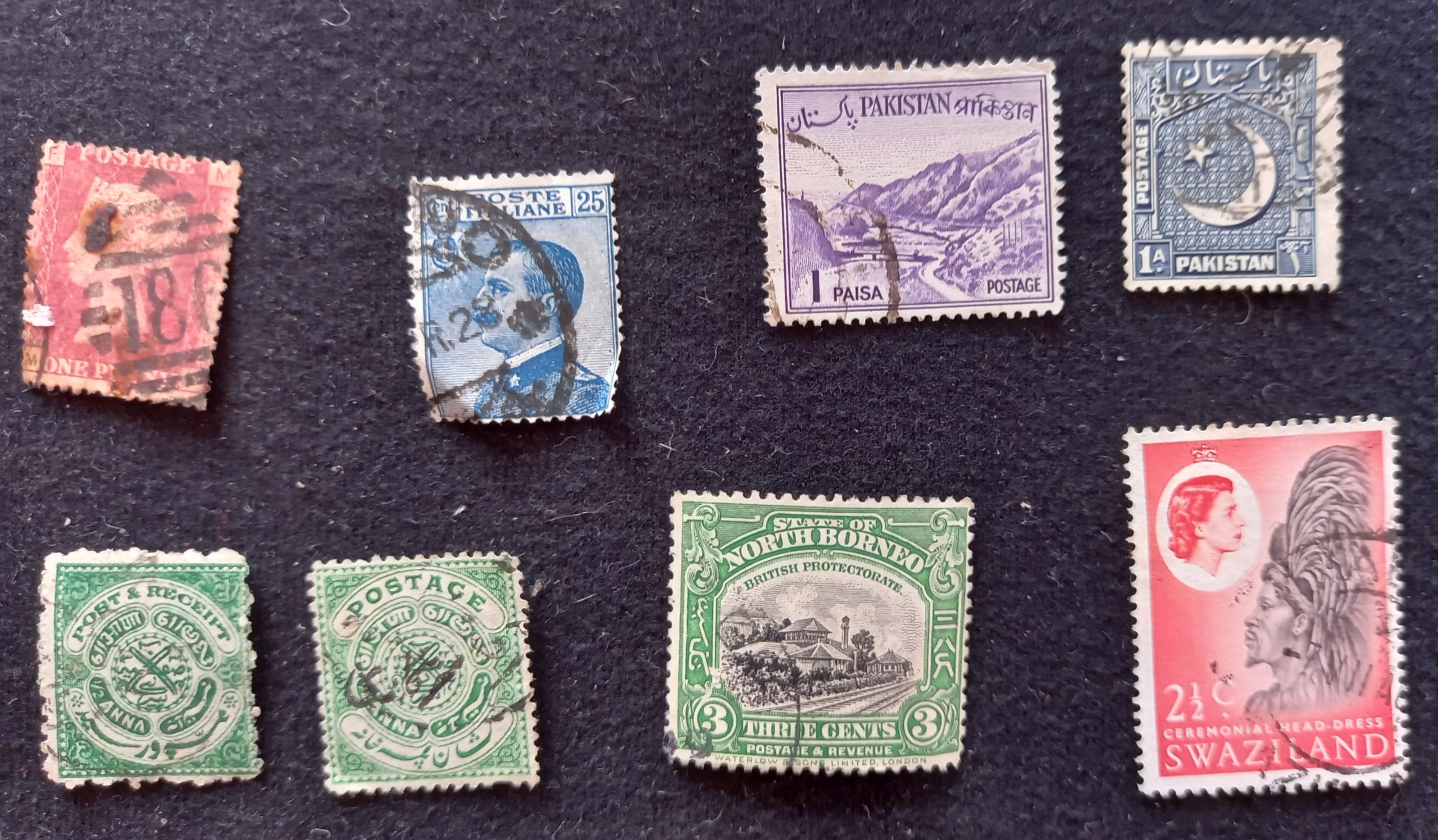
eight stamps from around the world
It is a moment of anticipation when faced with an envelope like this. Sadly this one only had eight stamps inside but eight stamps that each tell a story and demonstrate the value of DigiClerk Stamps.
We will take them one by one and use stamp identifier app to help us on our way.
Stamps 1
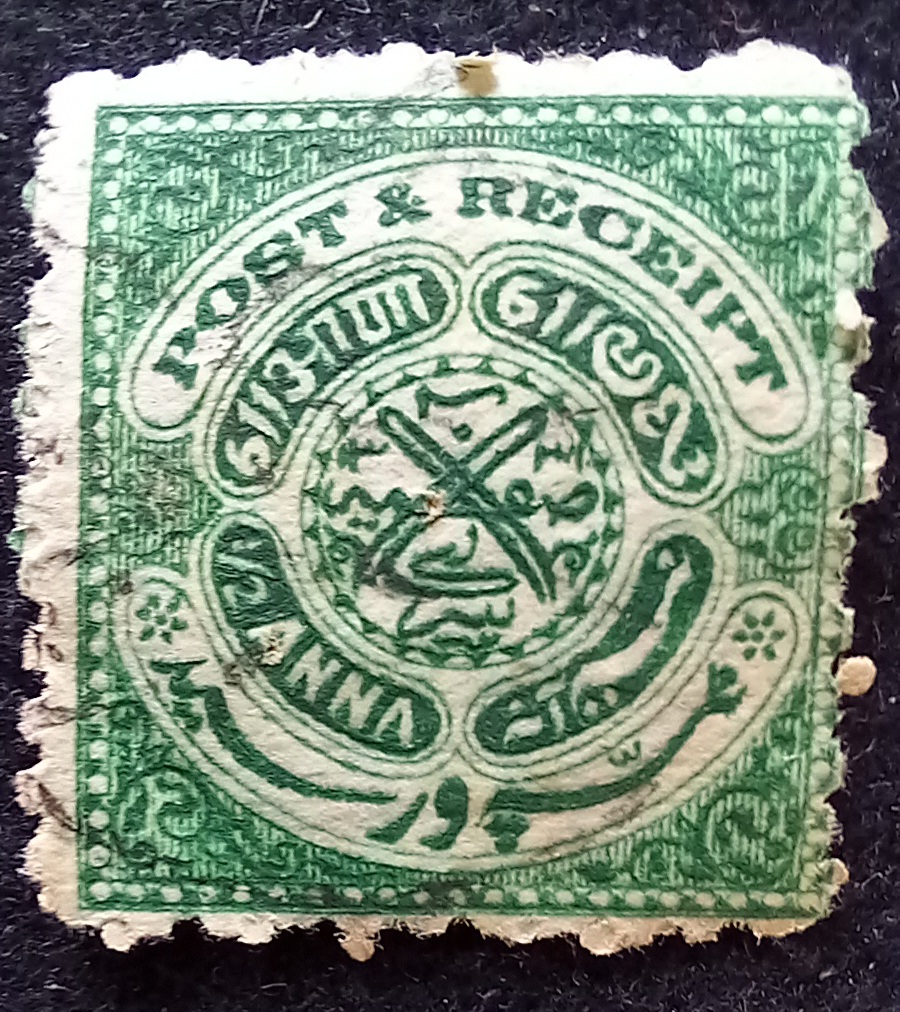
hyderabad
and 2.

The stamp identifier tells us that the country is Hyderabad and that the image is the Seal of Nizam. One is inscribed ‘postage’ and the other ‘post and receipt’. The stamps were issued in 1908. A quick look at Hyderabad – Wikipedia tells us that Hyderabad is in the lower middle of the land mass of India and that “Until 1874 there were no modern industries in Hyderabad. With the introduction of railways in the 1880s, four factories were built to the south and east of Hussain Sagar lake,and during the early 20th century, Hyderabad was transformed into a modern city with the establishment of transport services, underground drainage, running water, electricity, telecommunications, universities, industries, and Begumpet Airport. The Nizams ruled the princely state of Hyderabad during the British Raj.” Hence the Seal of Nizam. So, these are Indian stamps. A quick look at DigiClerk Stamps shows that many of the Indian stamps are in folder (album) 011. So we will upload them and store them in album 011 alongside the other India stamps.
Now we move, geographically, NW across India to the next two stamps from Pakistan. Stamp
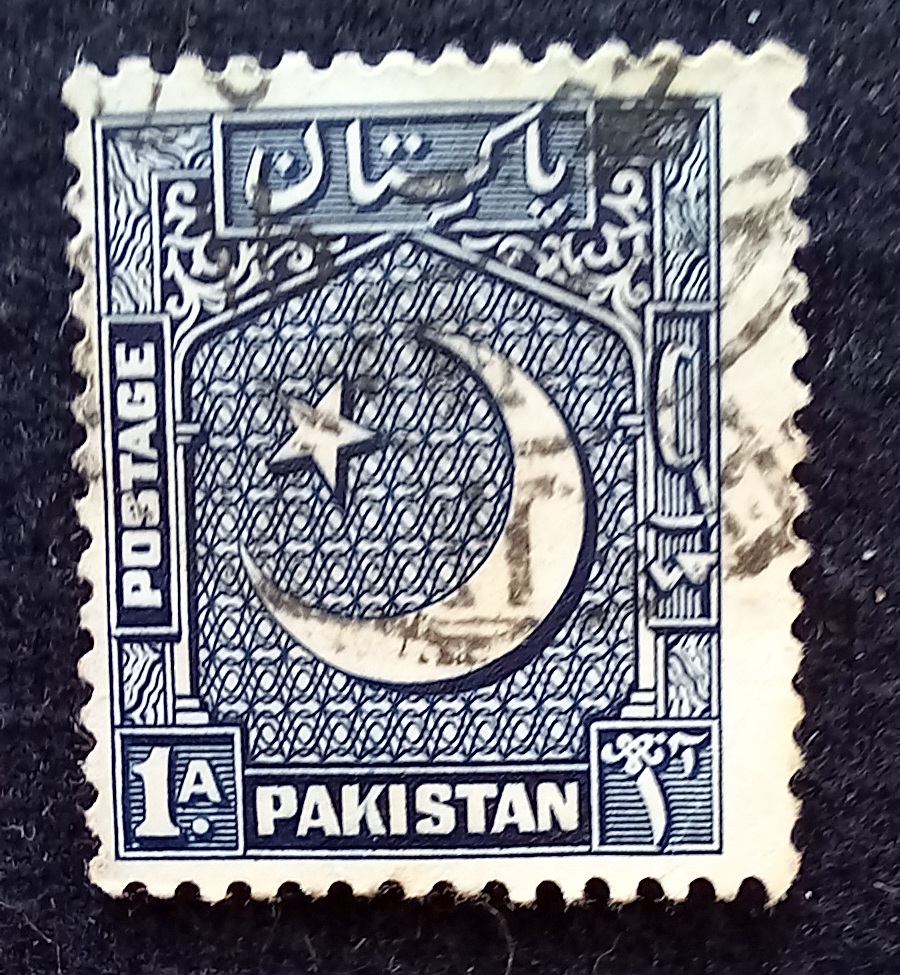
pakistan
1 and Stamp
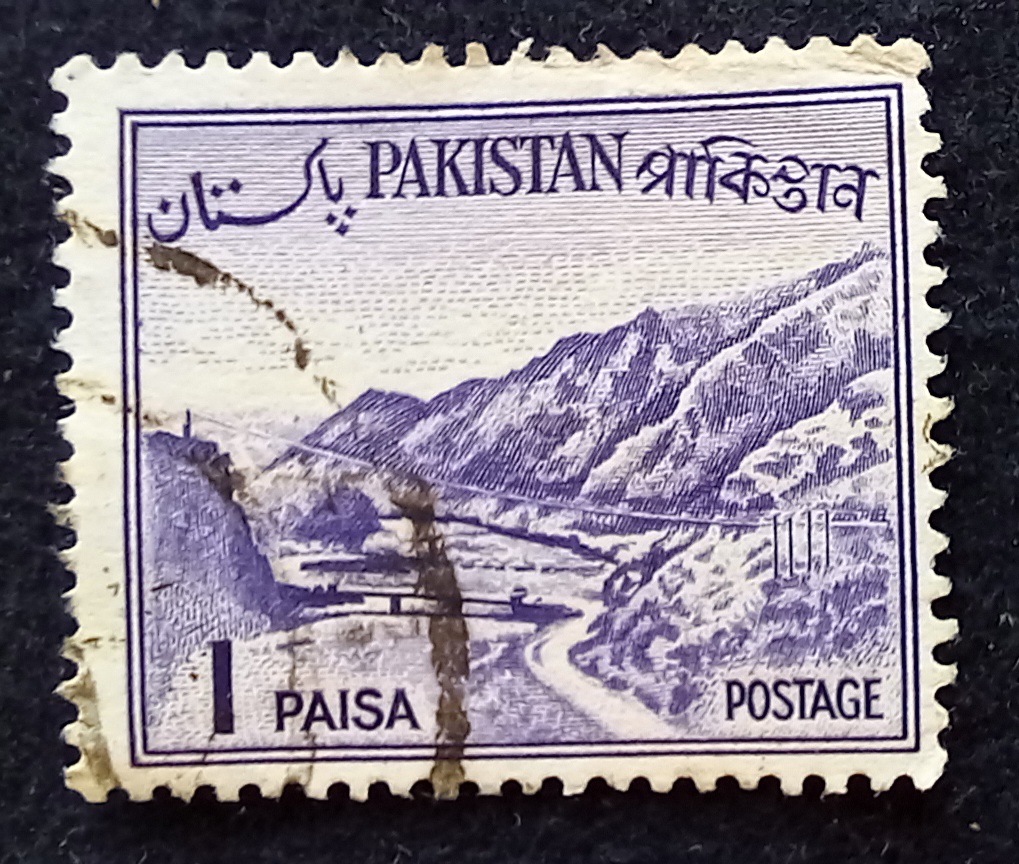
pakistan
2. Stamp 1 shows the Crescent and Star and is, of course, from Pakistan. It was issued in 1952 and was one Pakistani Anna. Stamp 2 is the Khyber Pass and was issued in 1961. It was part of a Pakistan set of ‘country views. Whereas the currency for stamp 1 was Anna Stamp 2 was worth 1 Pakistani paisa. Using DigiClerk to find where the other Pakistan stamps are, physically, this interesting India over stamped Pakistan gem appears. King George VI wearing the Imperial Crown of India, over stamped with ‘Pakistan’. This was produced in 1947 and was worth 1 1/2 Pakistani Anna. More to follow…
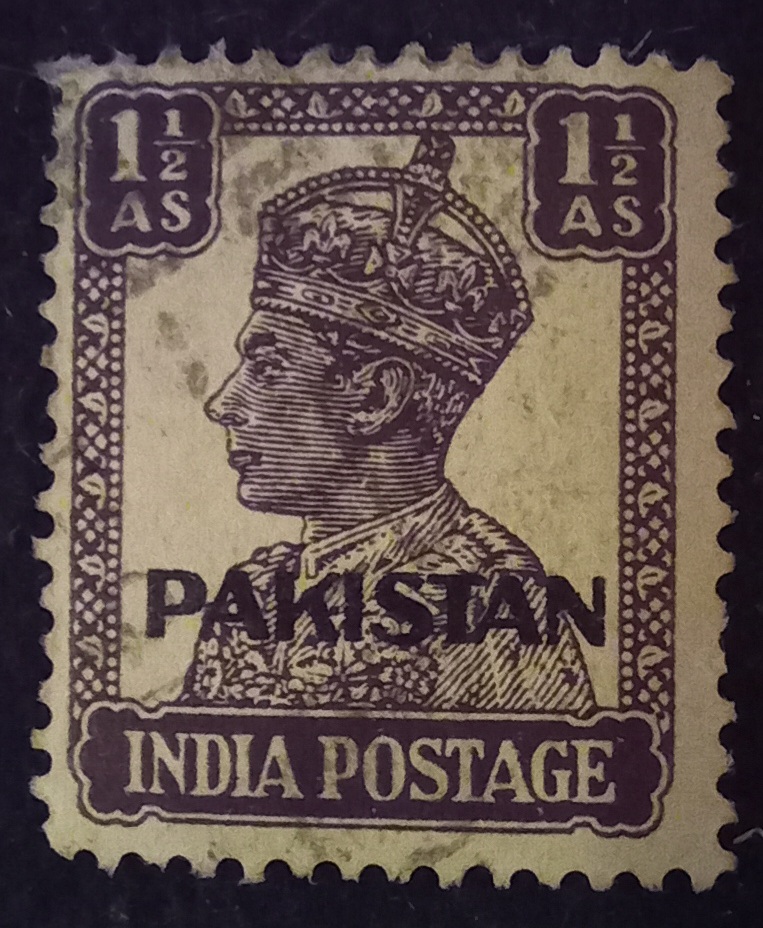
king george VI

